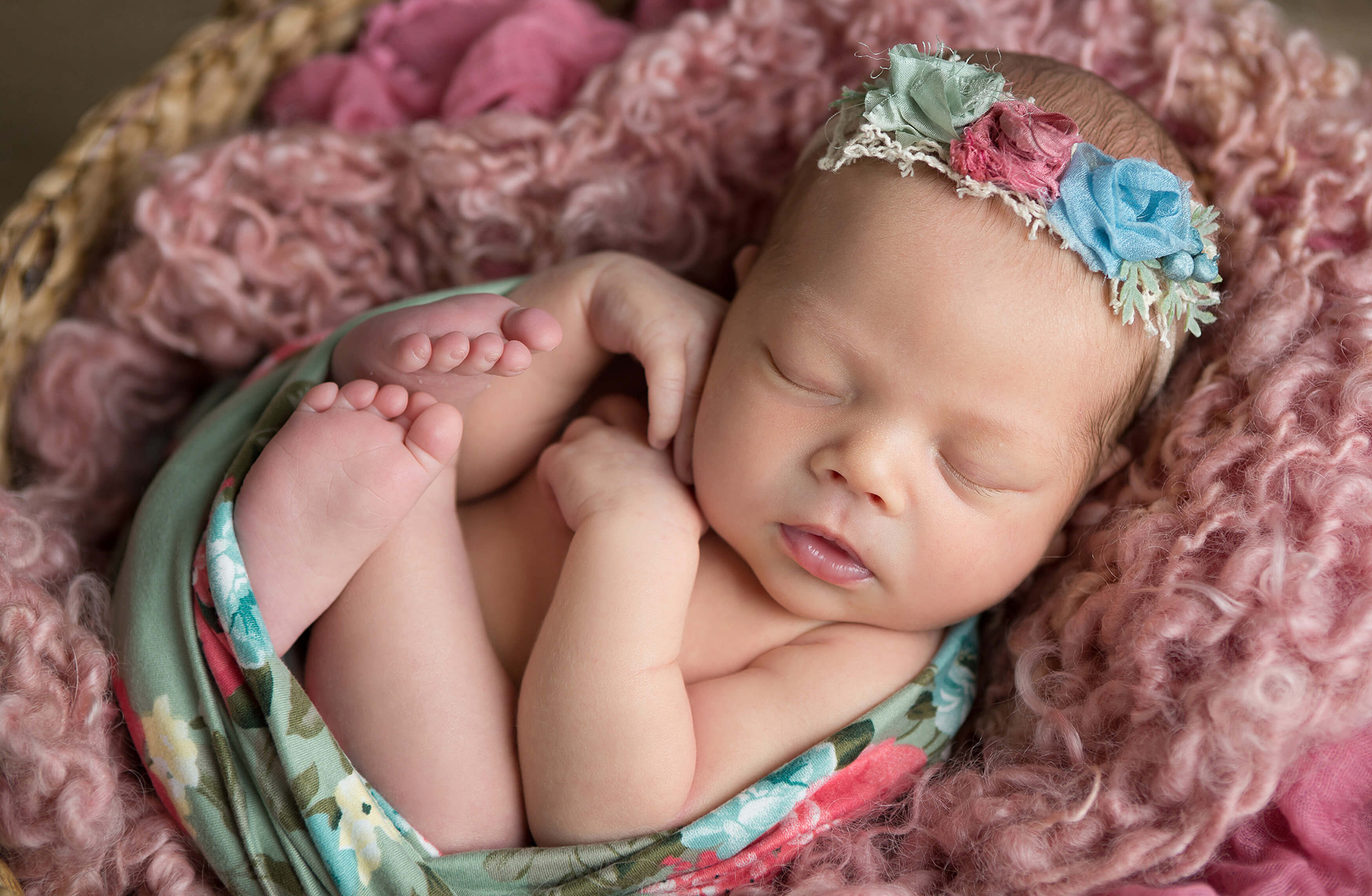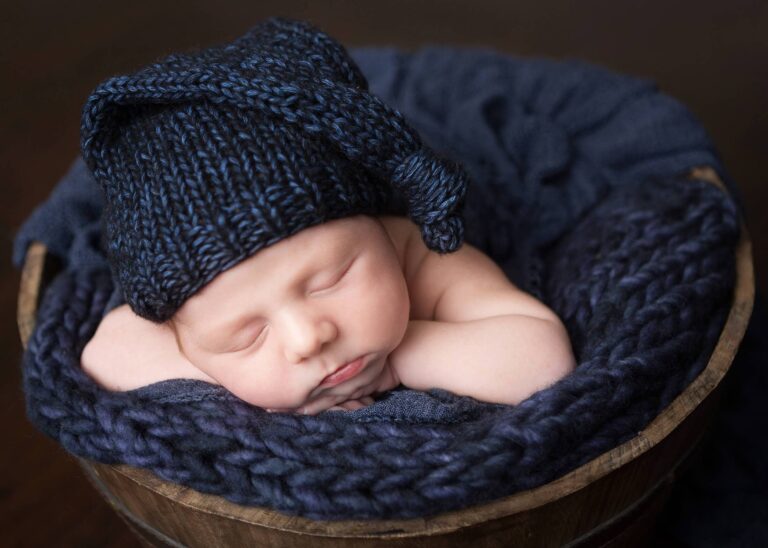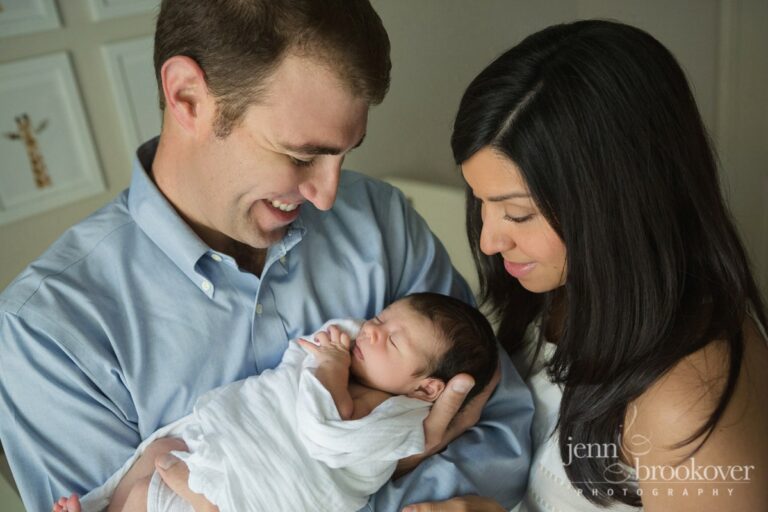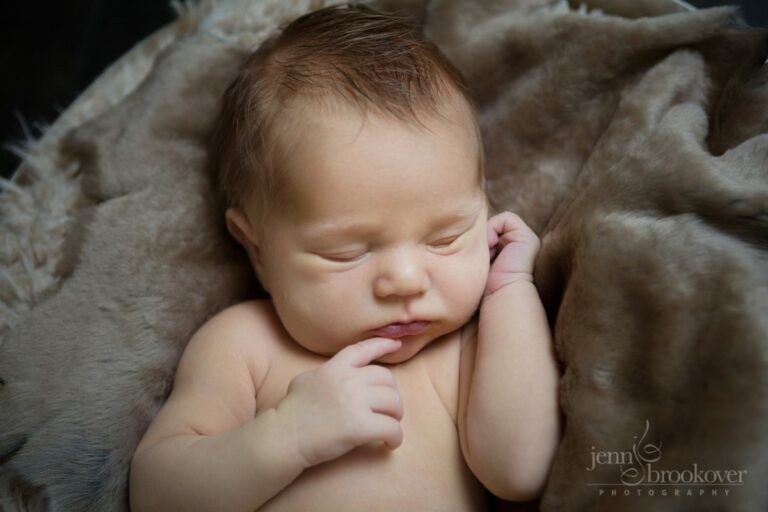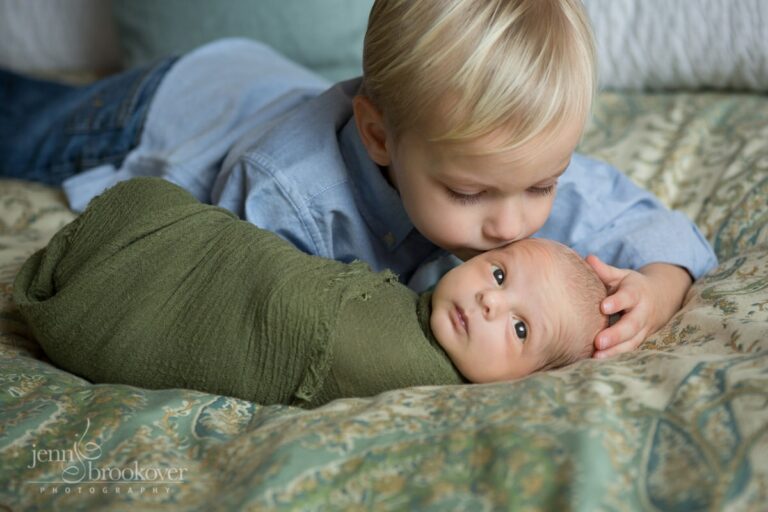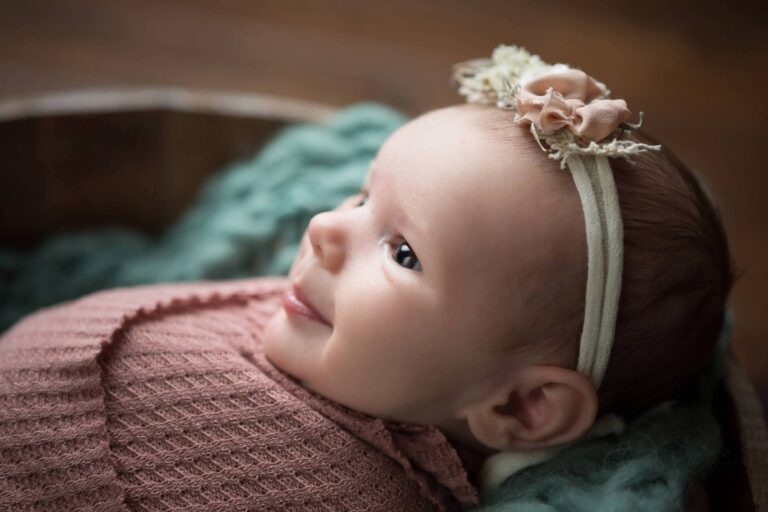Newborn Photography Safety: Tips for Parents
Capturing the precious moments of your newborn’s life is an incredible experience, but it’s essential to prioritize safety during these sessions. In this blog post, we’ll guide you through the crucial aspects of newborn photography safety and provide practical tips for parents to ensure a smooth, memorable, and safe experience.
Key Takeaways
- Understand how newborn photography differs from other sessions and how to select an experienced photographer.
- Ensure cleanliness, proper support and posing, and attention to detail during sessions.
- Parents should ask about their photographers experience with newborns
Understanding Safety in Newborn Photography
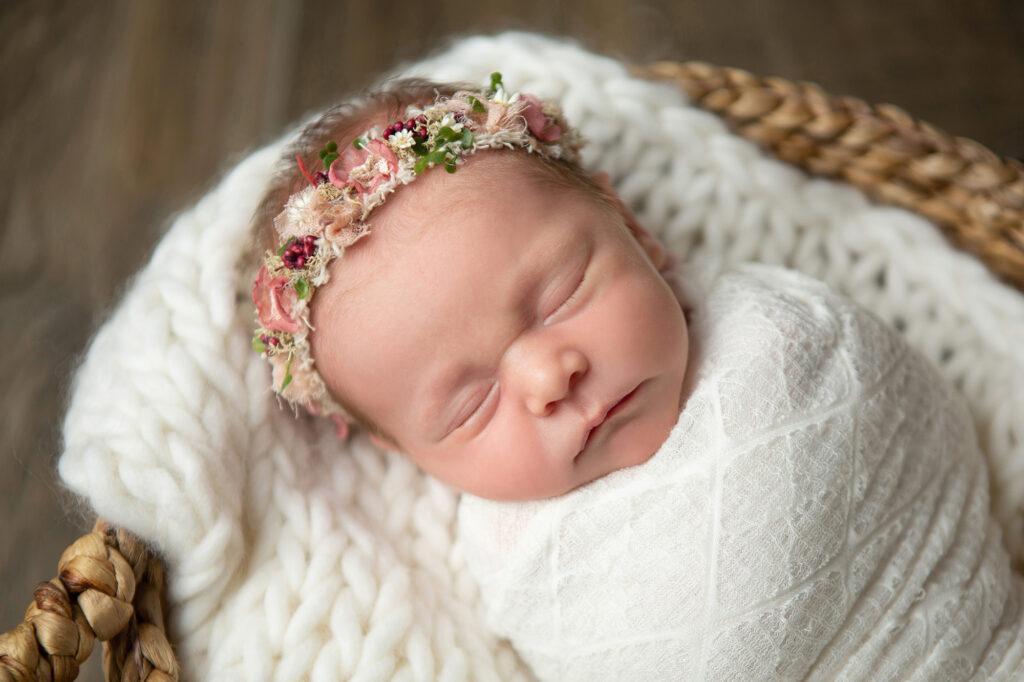
Newborn photography is a specialized field that requires unique skills and knowledge, especially when it comes to newborn safety. Being aware of safe handling practices during your newborn session, is of utmost importance. As a parent, you want to cherish the memories of your newborn while feeling confident in their safety or well-being.
Selecting an experienced newborn photographer who prioritizes safety can make all the difference. Knowing the right questions to ask and understanding safe practices can help you make an informed decision. Photographers embarking on newborn photography should practice safe handling, which guarantees beautiful photos while maintaining everyone’s feelings of security.
Parents can help in this process as they learn more about the newborn photography industry.
Selecting a Safety-Conscious Newborn Photographer

Begin your search for a safety-conscious newborn photographer by taking a look at your potential photographers their portfolio. Do the babies seem content? Are they in natural positions? Are their fingers relaxed (this is generally a sign of a happy baby). We practice “baby-led” posing, which allows for adorable images while letting the baby guide the way.
Inquire about the photographer’s safety practices, protocols and safety training. Newborn photographers should support the baby’s head at all times. They should also keep an eye on babies’ breathing patterns and warmth/skin color. Remember, it’s okay to ask questions and express any concerns you might have during the selection process and the session.
Lastly, take into account the photographer’s commitment to cleanliness and hygiene. This includes their practices for sanitizing equipment, washing hands, and how they handle situations when they or someone else is sick. This should include the photographer, their family, the client and anyone in the home (including visitors and nannies).
Essential Safety Tips

When booking a newborn session, parents should consider three safety tips for newborn photography: uphold cleanliness and hygiene, guarantee proper support and posing, and enlisting a spotter or composite plan if necessary.
Let’s explore each of these aspects in more depth to clarify their significance in newborn photography safety.
Cleanliness and Hygiene
Hygiene is paramount in newborn photography as it helps reduce the risk of transmitting germs and infections. Before handling a newborn, photographers should always obtain consent from the parents and ensure they have clean hands.
A safe newborn photographer should practice proper hygiene by washing their hands (or using hand sanitizer), sanitizing equipment, and laundering blankets or swaddles with dye- and perfume-free newborn safe detergent after each session. Small items such as headband and hats can be sterilized using a UV light.
If photographers need to make major movements with the newborn during the photoshoot, they should seek permission and clearly articulate the movements before proceeding. A clean and hygienic environment is vital for your baby’s safety and comfort.
Proper Support and Posing
One of the most critical aspects of newborn safety is proper support and newborn posing. Newborn neck muscles are not fully developed until around six months of age, so it’s essential to support baby’s head, especially around the baby’s chin, to avoid strain on the neck. This can be achieved using posing pillows or a support system within the prop. We use specialized posing pillows to get proper neck support.
When utilizing a prop such as a bowl or basket, the photographer should choose one that fits the size of the baby and allows proper support of baby’s head and neck. The prop should also have a weight in the bottom to counter-balance the baby’s weight if it is made of basket-like material. Special inserts are also available to help support baby under the blankets and in a certain position. A camera strap should also be used. If baby is unwrapped, a spotter within arms ready should be used (this can be a parent).
To ensure safe and proper posing, photographers can use composite images, which are created by combining multiple photographs through photo editing software. This technique allows for complex poses without putting the baby at risk (two images in one). Since we practice baby-led posing, we generally do not need to do composite images. We prefer natural poses instead of those like the popular pose, “froggy pose”, “potato sack pose”, and anything that looks like baby is hanging from a branch.
Ensuring your baby’s safety and comfort should take precedence over achieving a specific pose or look. Some babies are more flexible than others. Some like their hands a certain way. And some just want to stay wrapped up warm!
Ensuring Comfort and Well-being of Newborns
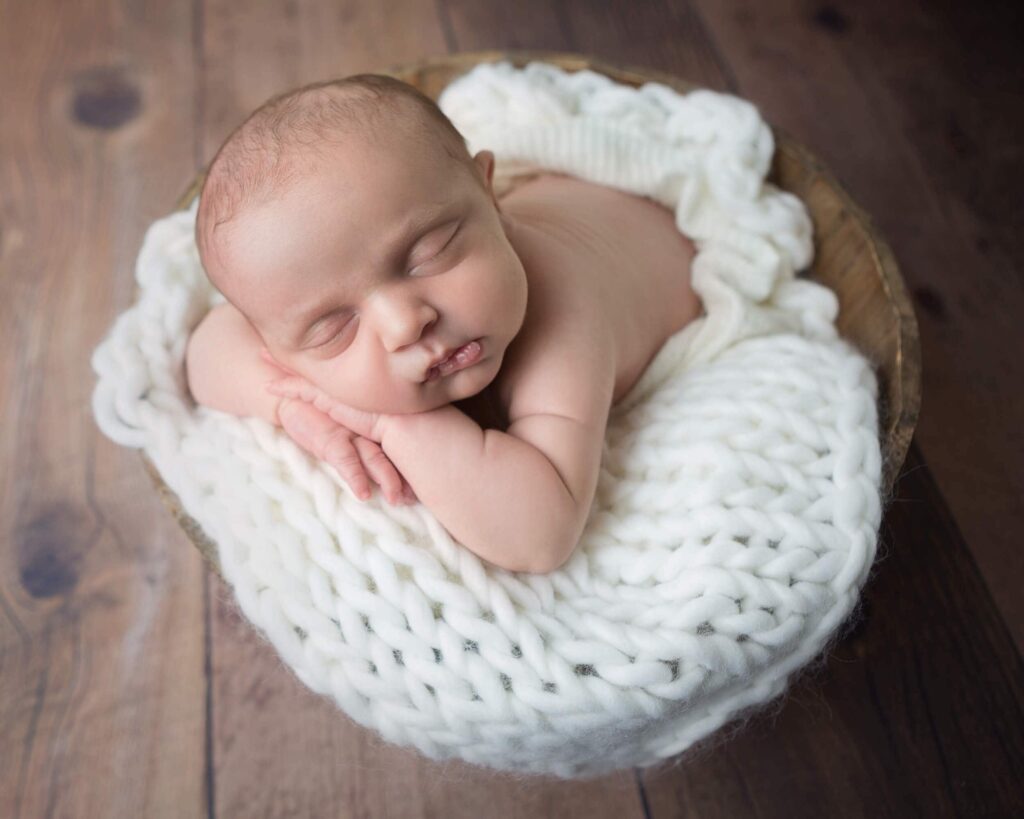
During a newborn photography session, your baby’s comfort and well-being take precedence. To ensure their comfort, pay attention to the following:
- Room temperature: Make sure the room is warm enough for your baby. Wrapping baby, use of a small space heater (not too close), and the heating of wraps before use can help with this.
- Feeding breaks: Take breaks during the session to feed your baby and keep them comfortable. A quick time to nurse, a pre-pumped or formula bottle, or a pacifier can all help with this.
- Baby’s cues: Watch for signs of discomfort or fatigue from your baby and communicate with the photographer to make adjustments as needed. Sometimes they need a cuddle, diaper change or just the smell of mom.
If the photographer or anyone in the family unwell, it’s best to reschedule so that baby will not be exposed to the germs. If baby has had any recent procedures or unique needs, the timing of the session should be considered. This could include things like circumcision, tongue-tie, clavicle or hip issues. Baby acne or blocked tear ducts are generally not an issue (beyond extra retouching).
Incorporating breaks when photographing newborns is essential to provide the newborn with the opportunity to be comforted. An experienced photographer knows when baby needs mom’s touch and can keep an eye out for things such as rooting or flailing their arms.
When you begin photographing newborns, pay attention to a baby’s cues, including baby breathing. During a newborn photography session it is fundamental to ensure the comfort and safety of the newborn babies. When wrapping baby, the photographer should also keep an eye on the umbilical cord (or belly button clamps) if it has not fallen off.
Sibling and Pet Involvement in Newborn Photography
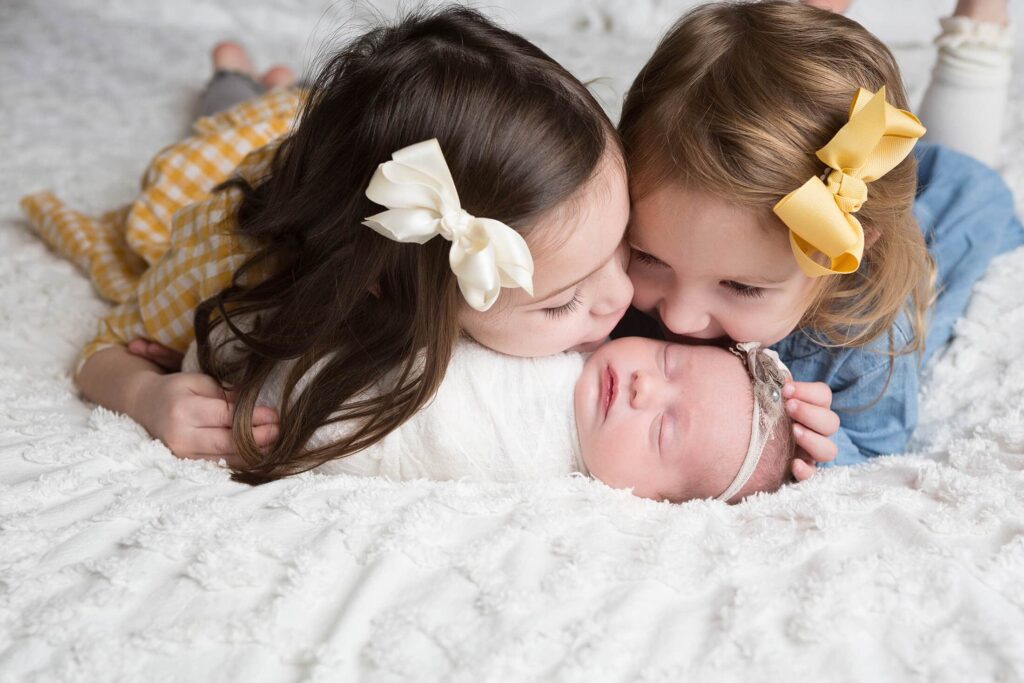
Involving siblings and pets in newborn photography can create beautiful memories.
When posing siblings with the newborn, they can sit behind or lie down next to the newborn if they are young or not interested in holding their new little sibling. If they are older, they can safely hold the newborn while seated on a flat surface such as a chair, couch or bed. Parents should be close by during sibling shots for added safety and to provide assistance if needed.
When incorporating pets into the session, the safest way is for a parent to hold the newborn in their arms and allow the pet to approach. One parent can handle the pet, while the other holds the child.
When involving siblings and pets in your newborn photography session, safety and comfort should always be prioritized. These are also situations in which a composite image can be created.
The Role of Parents in Newborn Photography Safety
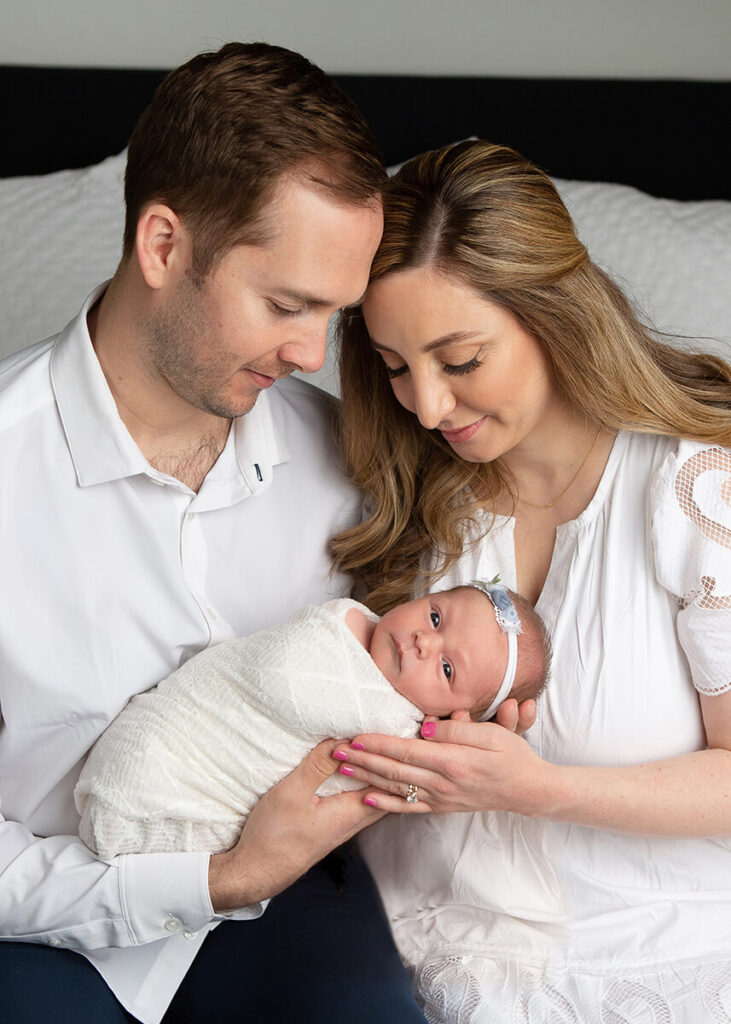
Parents can be helpful in safeguarding their newborn during a photography session. By speaking up if they are worried, parents can contribute to a safe and memorable experience. Being involved during the session and assisting when needed are both essential aspects of a parent’s role in newborn photography safety.
Ensuring that your chosen photographer has experience and is safety trained is important. Ask questions of your photographer before and during the session.
Staying Up-to-Date with Safety Regulations and Training
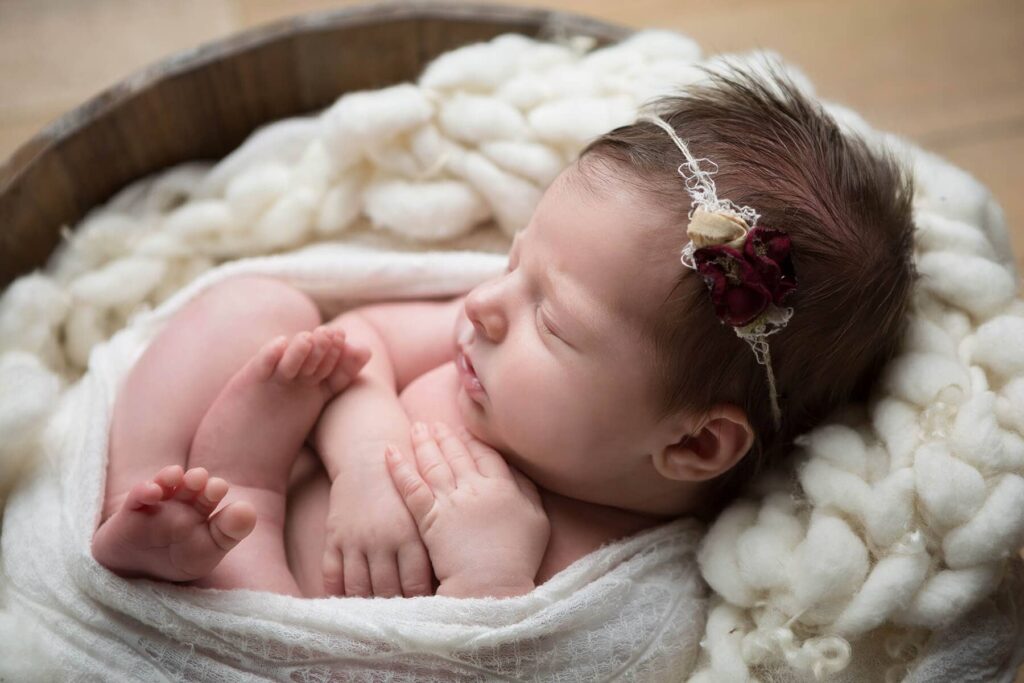
For the safety of newborns and their families, it’s vital for newborn photographers to keep up with the latest safety regulations and safety training. While certifications and industry memberships, such as the Professional Photographers of America (PPA), are available, the most important thing is experience.
Parents can find out more about newborn safety in general by asking their pediatrician or other healthcare profession. They should keep in mind that photographers are not medical professionals.
By following these steps, parents can ensure they are hiring a photographer who prioritizes the safety of their newborn.
Summary
In conclusion, newborn photography safety is a shared responsibility between the photographer and the parents. By choosing an experienced photographer who prioritizes safety, stays informed about safety regulations, and actively participating in the session, parents can ensure a safe and memorable experience for their infant.
Frequently Asked Questions
When should I secure my newborn photoshoot?
It’s best to plan your session during the second or third trimester of pregnancy. Most newborn photographers book based on your estimated due date, then adjust once baby is born. Consider adding a maternity session as well.
What do I need to know about newborn photography?
For newborn photos, it is best to capture the baby within the first two weeks of life. You should choose a time of day when baby has been well-fed and is most content. We find this to be mid-morning for most babies.
What should I think about as I choose a newborn photography?
Newborn photography is a very specialized niche which requires a gentle touch, a lot of patience, and a higher level of experience than general photography. By choosing a photographer who understands the importance of newborn safety, you will feel more confident with them handling your precious baby.
What should I look for when selecting a safety-conscious newborn photographer?
When selecting a safety-conscious newborn photographer, make sure to review their portfolio and experience, ask about their safety practices and protocols.
How can I safely involve siblings and pets in my newborn photography session?
To ensure a safe and enjoyable experience for everyone, use common sense when choosing posing positions making sure everyone is fully supported.

